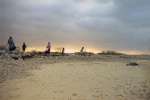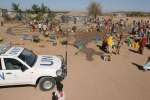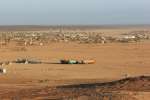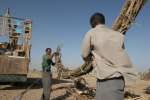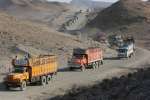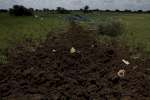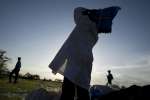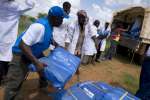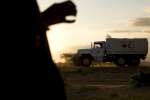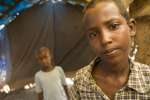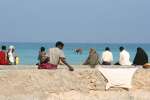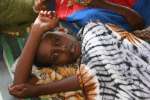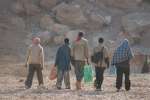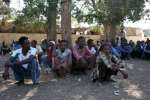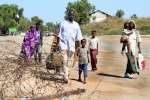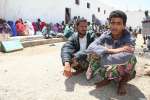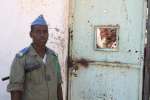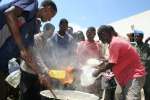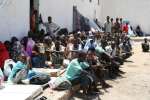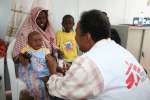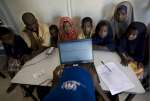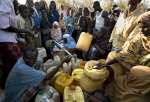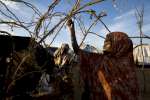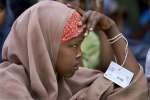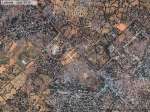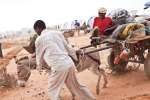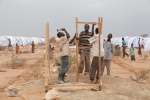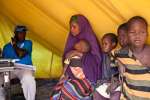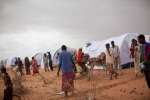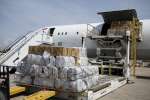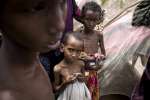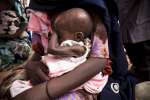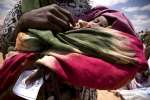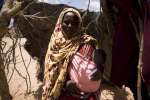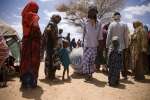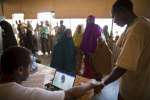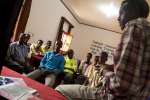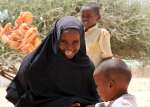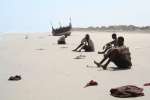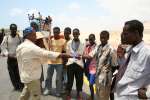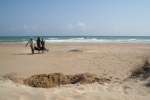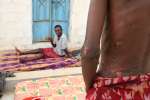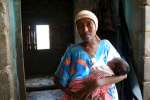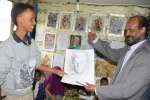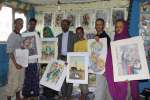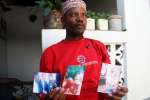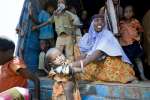
Somalia 
2015 UNHCR country operations profile - Somalia
| Overview |
Working environment
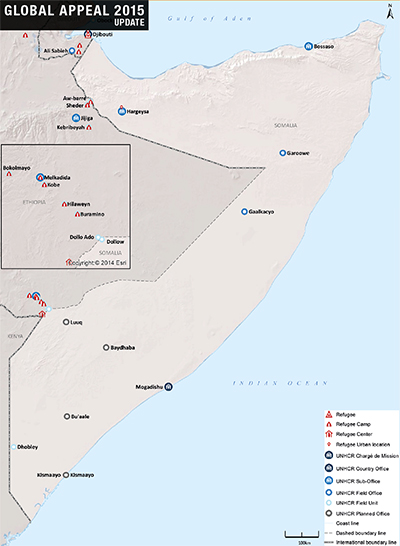
-
A tripartite agreement, signed by the Government of Kenya, the Federal Government of Somalia and UNHCR in November 2013, guides dialogue on the voluntary repatriation of Somali refugees living in Kenya. Both Governments participated in the meeting of the High Commissioner's Global Initiative on Somali Refugees in Addis Ababa earlier this year. The Somali Prime Minister then visited Kenya's Dadaab refugee camp in August. UNHCR is facilitating the ongoing dialogue throughout the region.
-
While a national legal framework for refugees and IDPs is being developed by the national authorities, the Office has working arrangements with various local administrations for the protection and assistance of people of concern. UNHCR has been supporting the Ministry of the Interior and Federalism in drafting a citizenship law since mid-2014.
-
The African Union Mission in Somalia (AMISOM) and the Somalia National Army launched two military offensives in 2014 to push armed insurgents out of the major cities in south-central Somalia. The ongoing military operation has led to an increase in the number of new internally displaced people (IDPs).
-
With hopes of greater stability in Somalia, some IDPs and refugees from neighbouring countries are spontaneously returning to their areas of origin. UNHCR has formed the Return Consortium, consisting of UN agencies and international NGOs in Somalia. The consortium promotes a standardized approach to assist returnees and seeks synergies to facilitate voluntary return, with the aim of safe and sustainable reintegration of returnees in Somalia.
People of concern
The main population groups of concern planned for in 2015 are: refugees and asylum-seekers, the majority of whom are Ethiopians residing mainly in Somaliland and Puntland for whom return is not yet envisaged owing to prevailing security risks and fear of persecution; Somali returnees from Kenya who are expected to go back to the south-central regions, while Somali refugees in Djibouti are expected to return to Somaliland; and internally displaced Somalis, the majority of whom are in south-central regions.
| Type of population |
Origin |
January 2015 |
December 2015 |
| Total in country |
Of whom assisted
by UNHCR |
Total in country |
Of whom assisted
by UNHCR |
| Total |
1,192,060 |
559,100 |
1,023,770 |
430,810 |
| Refugees |
Eritrea |
60 |
60 |
60 |
60 |
| Ethiopia |
2,940 |
2,940 |
3,500 |
3,500 |
| United Rep. of Tanzania |
70 |
70 |
80 |
80 |
| Various |
30 |
30 |
30 |
30 |
| Asylum-seekers |
Eritrea |
70 |
70 |
80 |
80 |
| Ethiopia |
15,880 |
15,880 |
7,000 |
7,000 |
| United Rep. of Tanzania |
10 |
10 |
10 |
10 |
| Various |
40 |
40 |
40 |
40 |
| Returnee arrivals during year (ex-refugees) |
Somalia |
40,000 |
40,000 |
40,000 |
20,000 |
| Internally displaced |
Somalia |
1,012,960 |
380,000 |
892,960 |
380,000 |
| Returnee arrivals during year (ex-IDPs) |
Somalia |
120,000 |
120,000 |
80,000 |
20,000 |
| Response |
Needs and strategies
UNHCR Somalia has started shifting the focus of its operations from traditional care and maintenance to a more active search for durable solutions and will continue its efforts for comprehensive solutions throughout 2015. The Office will carry out its mandate and implement its return strategy in cooperation with the Government and members of the Return Consortium. While it is acknowledged that this process will take some time to bear fruit, as the overall situation is not yet ripe for solutions, UNHCR will fully explore all existing or emerging opportunities.
Activities will focus on supporting the return of IDPs and refugees to their areas of origin, while also pursuing local integration where feasible. The Office will implement reintegration activities through community-based projects benefitting both returnees and host communities, in coordination with development actors. Such coordinated action will help ensure sustainable return and mitigate the potential for secondary displacement.
For non-Somali refugees in the country, UNHCR will enhance access to self-reliance and livelihood activities, in order to avoid heavy dependency on UNHCR assistance. Basic services currently provided by UN agencies or NGOs will gradually be integrated within national structures to ensure sustainability of assistance and avoid different standards for refugees and host communities.
| Implementation |
Coordination
UNHCR will work closely with the Government to consolidate the durable solutions approach within the framework of the High Commissioner's Global Initiative on Somali Refugees and in conjunction with the New Deal Compact, which brings together humanitarian and development assistance.
The organization will maintain responsibility for the overall coordination of the protection and shelter clusters. It will continue to provide technical support to the Government in the development of the national policy framework for people of concern, including concerning SGBV and a citizenship law, and will advocate for equal access to justice.
| Government agencies: Ministry of the Interior and Federalism, Ministry of Local Government and Rural Development, Ministry of Resettlement/Rehabilitation |
| NGOs: Action Africa Help International, Action in Semi-Arid Lands, Agency for Peace and Development, American Refugee Committee, Comprehensive Community-based Rehabilitation in Somaliland, Danish Refugee Council, Galkayo Education Center for Peace and Development, Galkayo Medical Foundation - Somalia, Gruppo per le Relazioni Transculturali, Horn Youth Development Association, INTERSOS - Italy, Kaalo Aid and Development, Mercy Corps, Norwegian Refugee Council, Relief International - USA, Save Somali Women and Children |
| Others: FAO, ICRC, IOM, Legal Clinic, OCHA, UNDP, UNFPA, UN-Habitat, UNICEF, University of Hargeisa, UNOPS, UNV, WFP, WHO |
| Financial information |
The financial requirements for UNHCR's operation in Somalia grew in the years leading up to 2011, when the Office assisted approximately 400,000 IDPs with emergency assistance packages in response to the famine crisis. In 2012, the budget was reduced as the programme focus shifted from emergency response to protection and the delivery of basic services.
Since 2012, there has been a steady increase in needs as a result of the growing number of IDPs. In 2015, the financial requirements for UNHCR's operation in Somalia are set at USD 79.3 million, approximately USD 10 million more than the 2014 budget. This increase reflects durable solutions requirements of IDPs and refugees, including for return and local integration.
Source: UNHCR Global Appeal 2015 Update
|
| Residing in Somalia [1] |
|---|
| Refugees [2] | 3,582 |
|---|
| Asylum Seekers [3] | 9,320 |
|---|
| Returned Refugees [4] | 19,004 |
|---|
| Internally Displaced Persons (IDPs) [5] | 1,133,000 |
|---|
| Returned IDPs [6] | 0 |
|---|
| Stateless Persons [7] | 0 |
|---|
| Various [8] | 69 |
|---|
| Total Population of Concern | 1,164,975 |
|---|
| Originating from Somalia [1] |
|---|
| Refugees [2] | 1,105,618 |
|---|
| Asylum Seekers [3] | 49,990 |
|---|
| Returned Refugees [4] | 19,004 |
|---|
| Internally Displaced Persons (IDPs) [5] | 1,133,000 |
|---|
| Returned IDPs [6] | 0 |
|---|
| Various [8] | 74 |
|---|
| Total Population of Concern | 2,307,686 |
|---|
The conference, which will took place in Brussels on 21 October 2015, and focused on creating conditions for voluntary return.
The Addis Ababa Commitment, adopted recently by UNHCR and regional governments, is a major step forward in the search for sustainable solutions for the more than 1 million Somali refugees.
An interactive map of UNHCR's operations in Somalia
Crossing the Gulf of Aden
Every year thousands of people in the Horn of Africa - mainly Somalis and Ethiopians - leave their homes out of fear or pure despair, in search of safety or a better life. They make their way over dangerous Somali roads to Bossaso in the northern semi-autonomous region of Puntland.
In this lawless area, smuggler networks have free reign and innocent and desperate civilians pay up to US$150 to make the perilous trip across the Gulf of Aden.
Some stay weeks on end in safe houses or temporary homes in Bossaso before they can depart. A sudden call and a departure in the middle of the night, crammed in small unstable boats. At sea, anything can happen to them - they are at the whim of smugglers. Some people get beaten, stabbed, killed and thrown overboard. Others drown before arriving on the beaches of Yemen, which have become the burial ground for hundreds who many of those who died en route.
Crossing the Gulf of Aden
Somalia/Ethiopia
In February 2005, one of the last groups of Somalilander refugees to leave Aisha refugee camp in eastern Ethiopia boarded a UNHCR convoy and headed home to Harrirad in North-west Somalia - the self-declared independent state of Somaliland. Two years ago Harrirad was a tiny, sleepy village with only 67 buildings, but today more than 1,000 people live there, nearly all of whom are former refugees rebuilding their lives.
As the refugees flow back into Somalia, UNHCR plans to close Aisha camp by the middle of the year. The few remaining refugees in Aisha - who come from southern Somalia - will most likely be moved to the last eastern camp, Kebribeyah, already home to more than 10,000 refugees who cannot go home to Mogadishu and other areas in southern Somalia because of continuing lawlessness there. So far refugees have been returning to only two areas of the country - Somaliland and Puntland in the north-east.
Somalia/Ethiopia
Flood Airdrop in Kenya
Over the weekend, UNHCR with the help of the US military began an emergency airdrop of some 200 tonnes of relief supplies for thousands of refugees badly hit by massive flooding in the Dadaab refugee camps in northern Kenya.
In a spectacular sight, 16 tonnes of plastic sheeting, mosquito nets, tents and blankets, were dropped on each run from the C-130 transport plane onto a site cleared of animals and people. Refugees loaded the supplies on trucks to take to the camps.
Dadaab, a three-camp complex hosting some 160,000 refugees, mainly from Somalia, has been cut off from the world for a month by heavy rains that washed away the road connecting the remote camps to the Kenyan capital, Nairobi. Air transport is the only way to get supplies into the camps.
UNHCR has moved 7,000 refugees from Ifo camp, worst affected by the flooding, to Hagadera camp, some 20 km away. A further 7,000 refugees have been moved to higher ground at a new site, called Ifo 2.
Posted in December 2006
Flood Airdrop in Kenya
Gulf of Aden People-Smuggling: International Help Needed
An alarming number of people are dying trying to reach Yemen aboard smugglers' boats crossing the Gulf of Aden from Somalia. Over a three-week period in late 2005, at least 150 people perished while making the journey. These deaths are frequently the result of overcrowded boats capsizing or breaking down and going adrift without food or water. Those who survive the voyage to Yemen often give brutal accounts of smugglers beating passengers or forcing them overboard while still far off shore – in some instances with their hands and feet bound.
In response, UNHCR has issued an urgent appeal for action to stem the flow of desperate Ethiopian and Somali refugees and migrants falling prey to ruthless smugglers in a bid to reach Yemen and beyond. The refugee agency has also been working with the authorities in Puntland, in north-eastern Somalia, on ways to inform people about the dangers of using smugglers to cross the Gulf of Aden. This includes production of videos and radio programmes to raise awareness among Somalis and Ethiopians of the risks involved in such crossings.
Gulf of Aden People-Smuggling: International Help Needed
The Gulf of Aden: Sharp Rise in Crossings and Deaths
The number of people arriving on the coast of Yemen after being smuggled across the treacherous Gulf of Aden from the Horn of Africa has more than doubled this year. So far this year, more than 18,000 people have arrived in Yemen across the Gulf of Aden, and nearly 400 have died attempting the journey.
This surge in arrivals is largely due to the continuing conflict in Somalia and the use of new smuggling routes from Somalia to Yemen and across the Red Sea from Djibouti. Many of the new arrivals also tell of crop losses due to drought, which forced them to leave home. This photo set focuses on those people leaving from Djibouti.
UNHCR has been calling for increased action to save lives in the Gulf of Aden and other waters. We have stepped up our work in Yemen under a US$17 million operation that includes extra staff, provision of additional shelter and assistance, and protection for refugees and internally displaced people.
Posted on 20 May 2008
The Gulf of Aden: Sharp Rise in Crossings and Deaths
Running out of space: Somali refugees in Kenya
The three camps at Dadaab, which were designed for 90,000 people, now have a population of about 250,000 Somali civilians, making it one of the world's largest and most congested refugee sites. UNHCR fears tens of thousands more will arrive throughout 2009 in this remote corner of north-east Kenya as the situation in their troubled country deteriorates further.
Resources, such as food and water, have been stretched dangerously thin in the overcrowded camps, with sometimes 400 families sharing one tap. There is no room to erect additional tents and the new arrivals are forced to share already crowded shelters with other refugees.
In early 2009, the Kenyan government agreed to allocate more land at Dadaab to accommodate some 50,000 refugees. View photos showing conditions in Dadaab in December 2008.
Running out of space: Somali refugees in Kenya
Dire Times in Dadaab
Angelina Jolie's visit to Dadaab in north-east Kenya puts a spotlight on the overcrowded camp complex, home to tens of thousands of refugees.
When UNHCR Goodwill Ambassador Angelina Jolie visited Dadaab in north-east Kenya on September 12, 2009, she saw first-hand some of the tough conditions that tens of thousands of refugees must live in. The overcrowded three-camp complex is home to more than 285,000 mainly Somali refugees, making it the largest refugee settlement in the world. The camps were established in the early 1990s and were intended for a maximum of 90,000 people. Up to 7,000 people are now arriving every month to escape continuing conflict in Somalia. Jolie talked to residents about their daily life and their exile. These images show her meetings with the refugees of Dadaab and show some of the conditions they live in. Aside from overcrowding, they face water shortages, crammed classrooms, health problems, the coming rainy season and a range of other difficulties. UNHCR hopes new land will be allocated soon for the new arrivals.
Dire Times in Dadaab
Galkayo: Vulnerable in a volatile land
Galkayo, located in Somalia's Puntland region, is home to more than 60,000 displaced people who fled war-torn south-central Somalia and harsh drought conditions in many parts of the country.
The displaced people are scattered around 21 makeshift settlements in Galkayo. Multiple families often share small, rudimentary shelters made of cardboard and plastic sheets. Despite overcrowding and extreme poverty, it is not uncommon for families to take in abandoned children and elderly people who are on their own.
Squalid conditions and lack of proper health care mean that simple ailments can easily develop into complications. There is little employment in Galkayo and most displaced people find informal day labour, such as collecting garbage or washing clothes for the locals.
UNHCR provides basic assistance to Galkayo's displaced people through vocational training and income generation programs meant to improve their livelihoods. The refugee agency also provides temporary shelter and emergency relief items for vulnerable families.
Galkayo: Vulnerable in a volatile land
Afgooye corridor fast becoming the capital of Somalia's displaced
UNHCR completed in September 2010 the latest assessment of the internally displaced population on the periphery of the Somali capital, Mogadishu, and has revised upwards the estimated number of displaced people in the so-called Afgooye corridor to 410,000. Since the escalation of the conflict in Somalia in 2007, a number of makeshift sites have sprung up along the 30-kilometre stretch of road leading west from Mogadishu to Afgooye town. In September 2009, an earlier UNHCR assessment put the number at 366,000. The latest assessment is the result of a three-month-long exercise led by UNHCR on behalf of humanitarian agencies in Somalia. Due to the difficult security situation and lack of access, it was based on high-resolution satellite imagery which allowed precise mapping of temporary shelters and measurement of buildings and subsequent application of the population density data. The rapid urbanization of the Afgooye corridor is clearly evident in the satellite imagery.
Afgooye corridor fast becoming the capital of Somalia's displaced
Somalia Emergency: Refugees move into Ifo Extension
The UN refugee agency has moved 4,700 Somali refugees from the outskirts of Kenya's Dadaab refugee complex into the Ifo Extension site since 25 July 2011. The ongoing relocation movement is transferring 1,500 people a day and the pace will soon increase to 2,500 to 3,000 people per day.
The refugees had arrived in recent weeks and months after fleeing drought and conflict in Somalia. They settled spontaneously on the edge of Ifo camp, one of three existing camps in the Dadaab complex, that has been overwhelmed by the steadily growing influx of refugees.
The new Ifo Extension site will provide tented accommodation to 90,000 refugees in the coming months. Latrines and water reservoirs have been constructed and are already in use by the families that have moved to this site.
Somalia Emergency: Refugees move into Ifo Extension
Somalia Airlift: UNHCR flies aid to Mogadishu for first time in 5 years.
For the first time in five years, UNHCR has been able to airlift vital humanitarian aid to the conflict-ravaged Somalia capital of Mogadishu. Tens of thousands of Somalis, fleeing drought and famine, have descended on the city in recent weeks searching for food, water, medicine and other assistance.
Three UNHCR-chartered aircraft have brought around 100 tonnes of aid to Mogadishu since August 8. The aircraft carried relief items from the agency's emergency stockpile in Dubai. The latest shipment includes high energy protein biscuits, plastic sheeting for shelter, sleeping mats, blankets, jerry cans for water and kitchen utensils.
The UN refugee agency usually delivers relief items to Mogadishu by sea and land for security reasons, but - due to the unprecedented rise in the number of uprooted civilians - UNHCR decided to airlift supplies in order to save time. There are now around half-a-million internally displaced people in Mogadishu.
Somalia Airlift: UNHCR flies aid to Mogadishu for first time in 5 years.
Bossaso: Life on the edge
The port of Bossasso, located in Somalia's northern Puntland region, is the main departure point for the tens of thousands of asylum-seekers and migrants who risk their lives in crossing the Gulf of Aden to reach Yemen.
In addition to those using Bossaso as a transit point, some 50,000 Somalis have sought refuge there after fleeing from their homes to escape conflict. Life is difficult for these internally displaced people, who live in 26 settlements, mostly on private lots around the city. Their crude homes are made from scraps of cardboard and plastic. The combination of overcrowding in the settlements and the use of very flammable building materials means that fires break out on a regular basis, seriously injuring people and destroying their shelters and belongings. Displaced families are also often at risk of being forcibly evicted by the private landlords.
UNHCR and its implementing partners try and improve the lives of these communities through small-scale projects, including income-generation activities and awareness programmes on issues such as sexual and gender-based violence.
Bossaso: Life on the edge
Dollow: Help inside Somalia
Dollow is a dusty Somali border town with a bridge, 3 km from the Dollo Ado refugee camps across the river in Ethiopia. But many of Dollow's most recent inhabitants are internally displaced people (IDPs) who have no intention of crossing the bridge - constructed with UNHCR's help over 20 years ago - to seek humanitarian assistance. Displaced by drought and famine from the Somali regions of Gedo, Bay and Bakool, these agro-pastoralists overwhelmingly express their wish to return home if the seasonal rains come in October and it is safe to do so.
UNHCR and other UN agencies are providing aid through a variety of local NGOs. Shelter, emergency assistance packages and dry food rations are being distributed while a wet feeding centre provides much-needed sustenance to the estimated 2,000 IDPs in Dollow.
Dollow: Help inside Somalia
Photo Essay: Dollo Ado, a Year After the Somalia Famine
In mid-2011, Dollo Ado was at the heart of a refugee crisis as a wave of Somalis facing violence and starvation at home trekked through the desert to seek safety in the small, remote border town in eastern Ethiopia. Many arrived exhausted, sick and emaciated, often carrying weak or dying children.
To deal with the mass influx, UNHCR and the Ethiopian government built three new refugee camps. The agency and its partners also set up critical nutrition programmes in the camps. Large-scale water, sanitation and hygiene programmes, combined with mass vaccinations and other public health measures, saved numerous lives.
One year on, the malnutrition rates among children have begun to stabilize. The number of new arrivals, although steady due to continued violence and poor rains, has dwindled and many people have moved from tents into semi-permanent housing. UNHCR's main focus is to improve lives in the camp by launching livelihood programmes and environmental projects for refugees and the host communities.
Today, the Dollo Ado area hosts five camps, with a total population of nearly 170,000 refugees. Several hundred new refugees arrive from Somalia every week. While the population of the newest camp, Buramino, is reaching 30,000, UNHCR and the government have agreed on the location for a sixth camp.
Photo Essay: Dollo Ado, a Year After the Somalia Famine
Somalia's Hawa Aden Mohamed wins Nansen Refugee Award
Hawa Aden Mohamed, a former refugee whose visionary work has transformed the lives of thousands of displaced Somali women and girls, is the winner of the 2012 Nansen Refugee Award. Widely known as "Mama" Hawa, she is the founder and director of an ambitious education programme in Galkayo, Somalia, that helps women and girls secure their rights, develop vital skills and play a more active role in society. View a slideshow of Mama Hawa's work at the Galkayo Education Centre for Peace and Development, which offers literacy courses and vocational training as well as food and other forms of humanitarian relief to internally displaced people [IDP].
Somalia's Hawa Aden Mohamed wins Nansen Refugee Award
East Africans continue to flood into the Arabian Peninsula
Every month, thousands of refugees, asylum-seekers and migrants from Somalia and Ethiopia cross the Gulf of Aden or the Red Sea to reach Yemen, fleeing drought, poverty, conflict or persecution. And although this year's numbers are, so far, lower than in 2012 - about 62,200 in the first 10 months compared to 88,533 for the same period last year - the Gulf of Aden remains one of the world's most travelled sea routes for irregular migration (asylum-seekers and migrants). UNHCR and its local partners monitor the coast to provide assistance to the new arrivals and transport them to reception centres. Those who make it to Yemen face many challenges and risks. The government regards Somalis as prima facie refugees and automatically grants them asylum, but other nationals such as the growing number of Ethiopians can face detention. Some of the Somalis make their own way to cities like Aden, but about 50 a day arrive at Kharaz Refugee Camp, which is located in the desert in southern Yemen. Photographer Jacob Zocherman recently visited the Yemen coast where arrivals land, and the camp where many end up.
East Africans continue to flood into the Arabian Peninsula
Nansen Refugee Award Presentation Ceremony
More than 400 people attended the annual presentation in Geneva in October 1, 2012 of UNHCR's Nansen Refugee Award. This year's inspirational winner from Somalia, Hawa Aden Mohamed, was unable to attend for health reasons, but she sent a video message. In the former refugee's absence, UN High Commissioner for Refugees António Guterres presented the award and Nansen medal to her sister, Shukri Aden Mohamed.
The 63-year-old humanitarian, educator and women's rights advocate, widely known as "Mama" Hawa, was honoured for her extraordinary service - under extremely difficult conditions - on behalf of refugees and the internally displaced, mainly women and girls but also including boys.
Above all she has been recognized for her work - as founder and director of the Galkayo Education Centre for Peace and Development in Somalia's Puntland region - in helping to empower thousands of displaced Somali women and girls, many of whom are victims of rape. The centre provides secondary education as well as life skills training.
The packed event also included an address by Liberian peace activist Leymah Gbowee, co-winner of last year's Nobel Peace Prize, and a video tribute to Mama Hawa as well as performances from UNHCR Honorary Lifetime Goodwill Ambassador and classical singer, Barbara Hendricks, and up and coming Swiss musician Bastian Baker.
Nansen Refugee Award Presentation Ceremony
New Arrivals in Yemen
During one six-day period at the end of March, more than 1,100 Somalis and Ethiopians arrived on the shores of Yemen after crossing the Gulf of Aden on smuggler's boats from Bosaso, Somalia. At least 28 people died during these recent voyages – from asphyxiation, beating or drowning – and many were badly injured by the smugglers. Others suffered skin problems as a result of prolonged contact with sea water, human waste, diesel oil and other chemicals.
During a recent visit to Yemen, UNHCR Assistant High Commissioner for Protection Erika Feller pledged to further raise the profile of the situation, to appeal for additional funding and international action to help Yemen, and to develop projects that will improve the living conditions and self sufficiency of the refugees in Yemen.
Since January 2006, Yemen has received nearly 30,000 people from Somalia, Ethiopia and other places, while more than 500 people have died during the sea crossing and at least 300 remain missing. UNHCR provides assistance, care and housing to more than 100,000 refugees already in Yemen.
New Arrivals in Yemen
A Family of Somali Artists Continue to Create in Exile
During two decades of conflict and chaos in Somalia, Mohammed Ousman stayed in Mogadishu and taught art as others fled the country. But life became impossible after Al Shabaab militants killed his brother for continuing to practise art. Four of the man's nine children were also murdered. Mohammed closed his own "Picasso Art School" and married his brother's widow, in accordance with Somali custom. But without a job, the 57-year-old struggled to support two families and eventually this cost him his first family. Mohammed decided to leave, flying to Berbera in Somaliland in late 2011 and then crossing to Aw-Barre refugee camp in Ethiopia, where he joined his second wife and her five children. UNHCR transferred Mohammed and his family to Addis Ababa on protection grounds, and in the belief that he could make a living there from his art. But he's discovering that selling paintings and drawings can be tough - he relies on UNHCR support. The following images of the artist and his family were taken by UNHCR's Kisut Gebre Egziabher.
A Family of Somali Artists Continue to Create in Exile
Tanzanian refugees return to Zanzibar
The UN refugee agency has successfully completed the voluntary repatriation of 38 Tanzanian refugees from Zanzibar who had been residing in the Somalia capital, Mogadishu, for more than a decade. The group, comprising 12 families, was flown on two special UNHCR-chartered flights from Mogadishu to Zanzibar on July 6, 2012. From there, seven families were accompanied back to their home villages on Pemba Island, while five families opted to remain and restart their lives on the main Zanzibar island of Unguja. The heads of households were young men when they left Zanzibar in January 2001, fleeing riots and violence following the October 2000 elections there. They were among 2,000 refugees who fled from the Tanzanian island of Pemba. The remainder of the Tanzanian refugee community in Mogadishu, about 70 people, will wait and see how the situation unfolds for those who went back before making a final decision on their return.
Tanzanian refugees return to Zanzibar
New arrivals in Ethiopia: Remote Dolo Ado becomes a safe haven for 10,000 Somalis fleeing violence
Since the beginning of this year an estimated 10,000 Somalis have crossed the border and sought shelter in Dolo Ado, a remote, sun-scorched and predominantly Somali corner of south-east Ethiopia. Most have fled insecurity, following the withdrawal of Ethiopian troops from south and central Somalia and the takeover of these areas by insurgent elements. At the peak of the influx in early February 2009, about 150 people were crossing the border each day.
In reponse, a UNHCR emergency team was sent to help run a transit centre in Dolo Ado. In addition, UNHCR dispatched convoys carrying emergency aid, including mosquito nets, blankets, jerry cans, kitchen sets and plastic sheets. Relief efforts are being coordinated with other UN agencies and NGOs to ensure needs are being met.
Although a number of displaced Somalis within south and central Somalia have started to return, mainly to Mogadishu, many Somalis remain in Dolo Ado in need of protection. Given the poor prospects for repatriation in the foreseeable future, a camp is now under development and refugees are being screened.
New arrivals in Ethiopia: Remote Dolo Ado becomes a safe haven for 10,000 Somalis fleeing violence


Return to Somalia
Ali and his family are ready to return to Somalia after living in Dadaab refugee camp for the past five years. We follow their journey from packing up their home in the camp to settling into their new life back in Somalia.


Somalia: UN High Commissioner For Refugees In Mogadishu
UN High Commissioner for Refugees António Guterres visits Mogadishu, expresses solidarity with Somali people on eve of Ramadan.


Somalia: Solutions For Somali Refugees
In Kenya, the UN High Commissioner for Refugees, António Guterres discusses solutions for Somali refugees.


Somalia: Saving Lives
Donor support for a specialized maternity-child clinic helps save the lives of displaced Somali mothers.
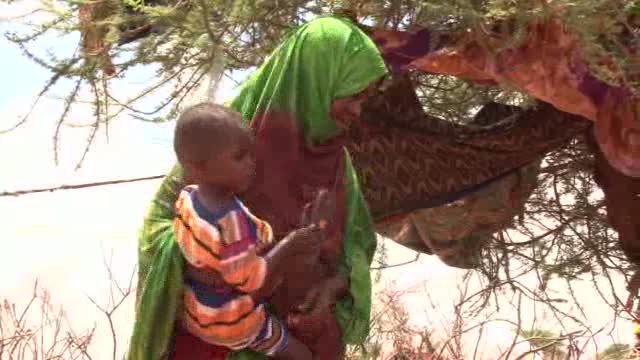

Somalia: More than a Living
Grants from UNHCR provide a lifeline to help displaced Somali families start small businesses.
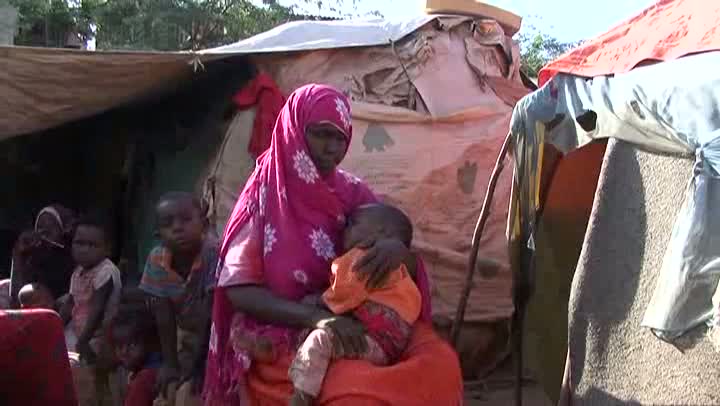

Somalia: On the Run
Thousands of people have fled the port city of Kismayo in Somalia, and despite the departure of the militants, many are choosing not to return.


Somali: Galkayo Tuk-Tuks
A donation of tuk-tuks to a group of internally displaced Somalis living in the town of Galkayo brings the promise of better times.


Nansen Refugee Award: 2012 winner Mama Hawa
Somali humanitarian Hawa Aden Mohamed wins the Nansen Refugee Award for her tireless and inspiring work with forcibly displaced women and girls.
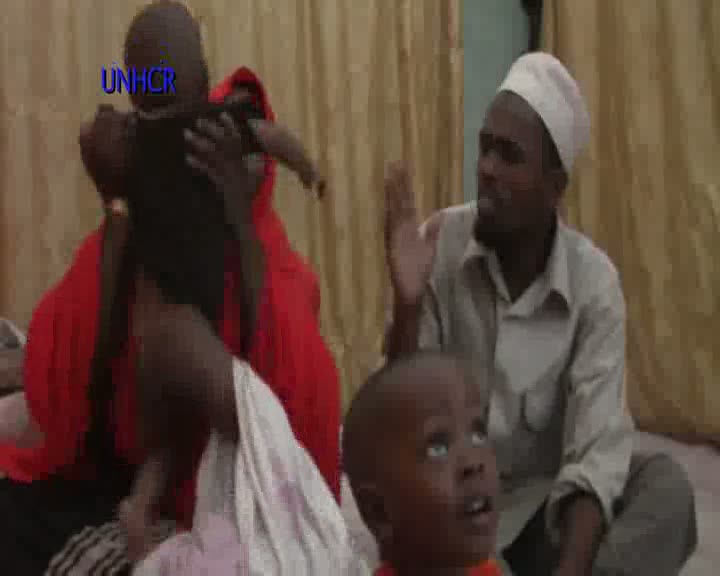

Somalia: Longing for Zanzibar
Driven from home by civil conflict, fourteen families might soon return to Zanzibar after years of exile in Somalia.


Somalia: Here to Stay
UNHCR works with aid agencies to build homes for long time displaced Somali families.
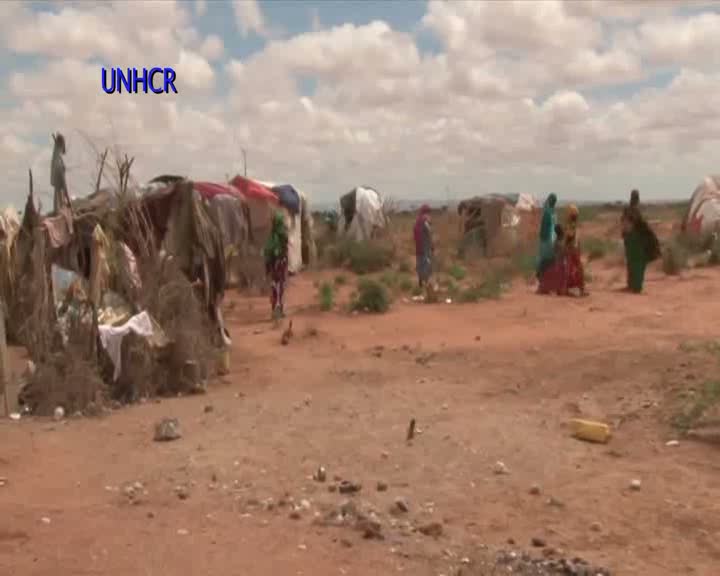

Somaliland: A Place to Call Home
In Somaliland, a project is under way to give some displaced families a much needed place to call home.
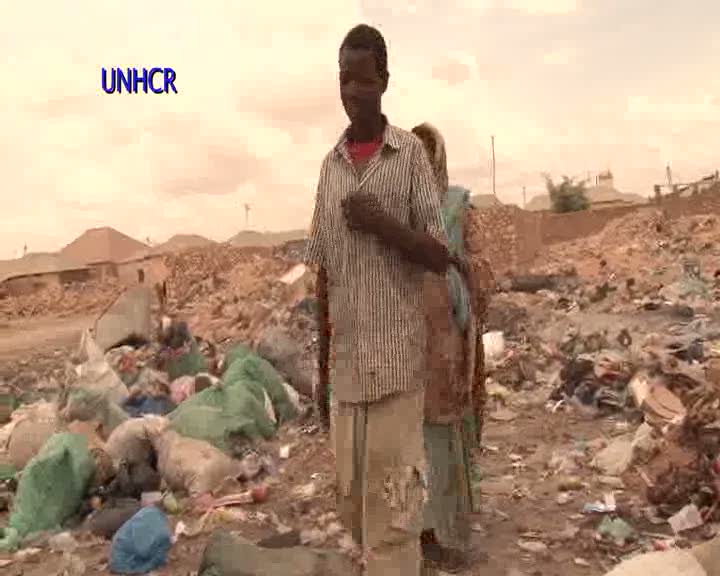

Puntland: One Step Ahead
A skills-training project gives young displaced Somalis hope - and a chance to find meaningful work.


Somaliland: The Pain of Rape
Victims of sexual abuse and violence face stigma and ridicule in their communities.
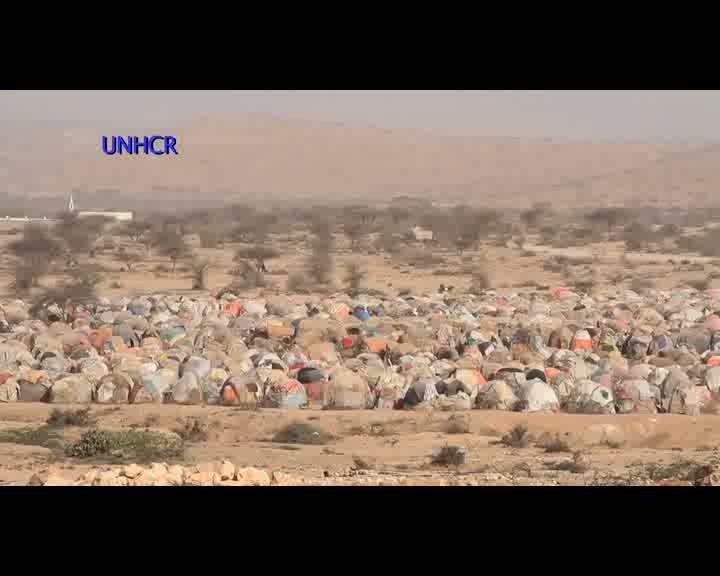

Somaliland: Making a Living
Some internally displaced Somalis sheltering in the self-styled region of Somaliland are learning a trade or opening businesses.
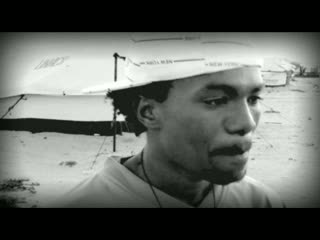

Hip Hop Hooray
Saber, a young Somali refugee in Tunisia's Choucha camp, wants to become a hip hop artist.
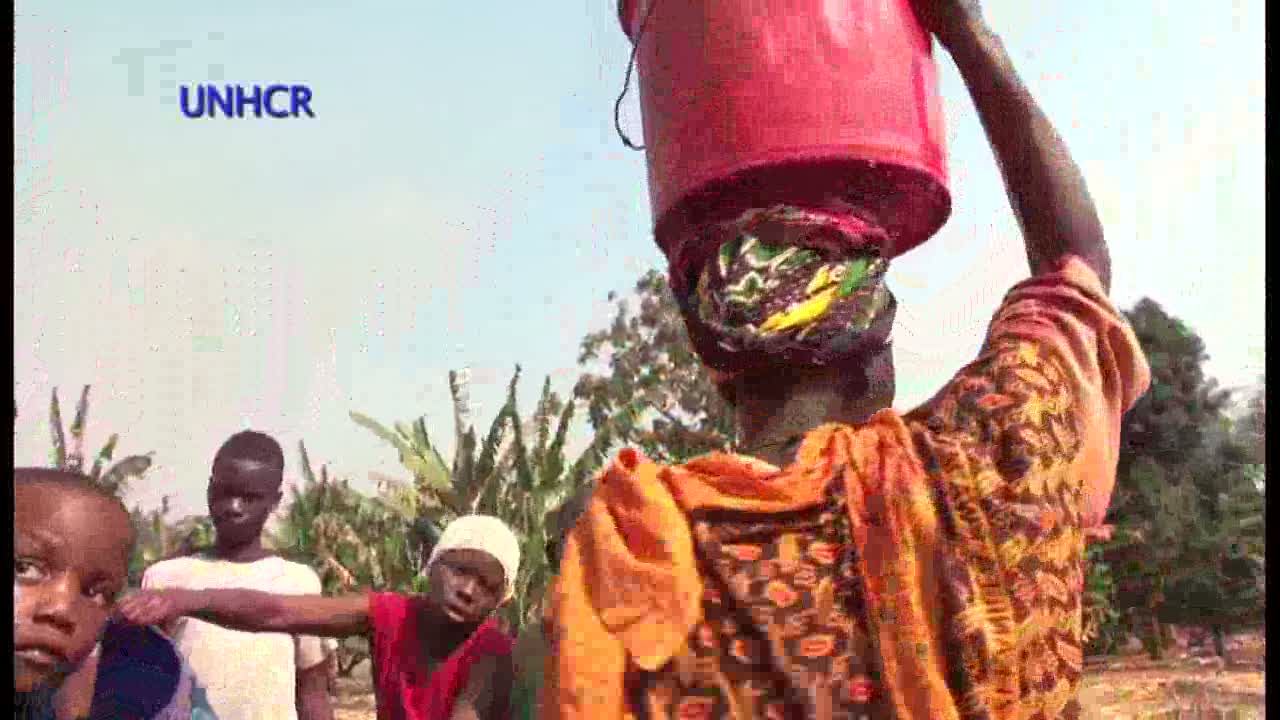

Tanzania: One Woman's Story
One Somali woman's struggle to ensure a better life for her daughters.


Somalia: No Peace Here
Fighting continues to force people to leave areas of the Somali capital, Mogadishu. Abduallahi Ali is fleeing from one makeshift camp to another, saying he fears for his life.
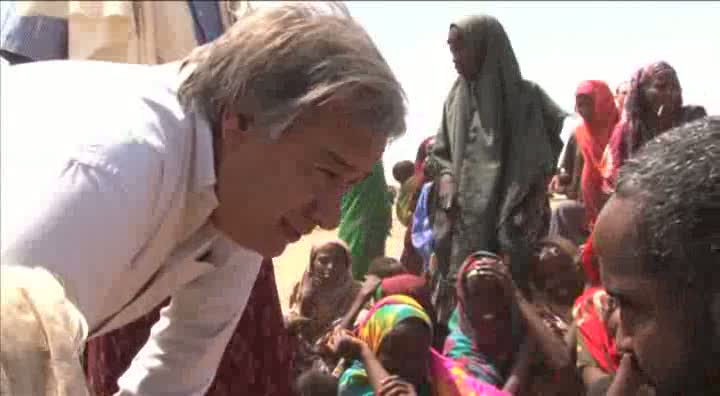

Somalia: Help at Home
UN High Commissioner for Refugees António Guterres, on a visit to Somalia, urges stepped up assistance to people inside the country.
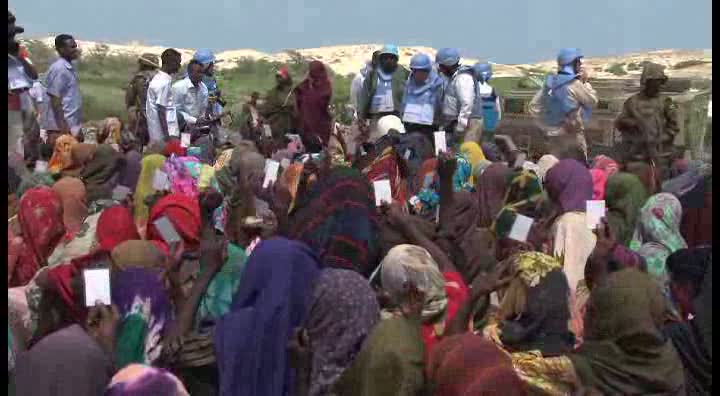

Somalia: Guterres in Mogadishu
During a landmark visit, the UN High Commissioner for Refugees calls on the international community to rapidly increase aid to Somalia
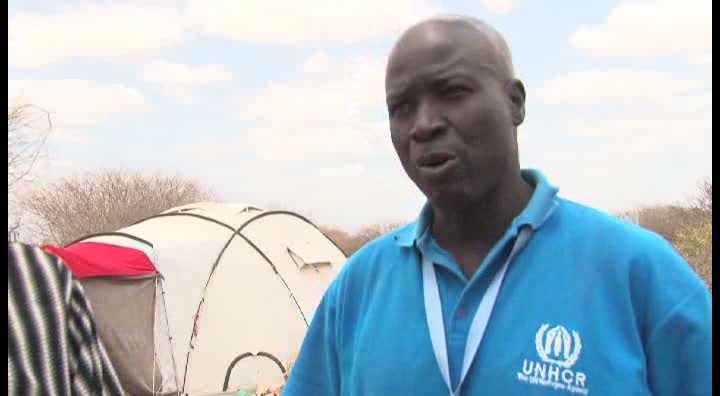

Kenya: New Homes
Thousands of Somali refugees journey to a new home as UNHCR opens a camp in Kenya.
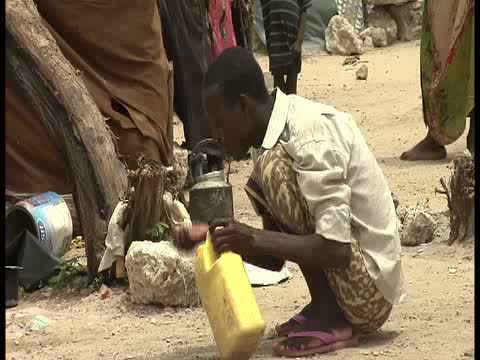

Somalia: Mogadishu Aid Distribution
UNHCR flies in a third cargo of aid to Mogadishu. The assistance is bound for thousands of displaced people in the Al Adala settlement just five minutes from the airport.
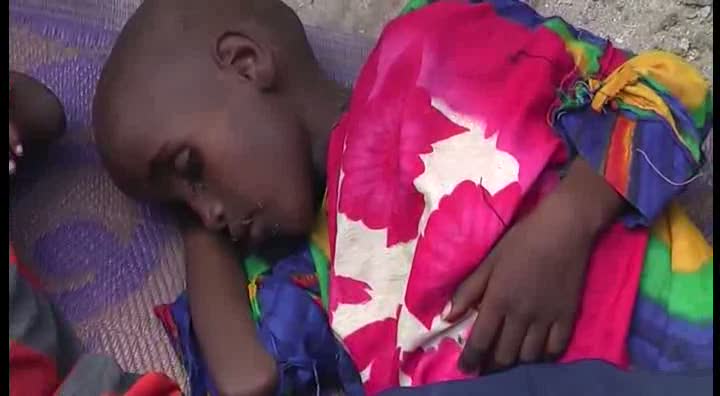

Somalia: Desperate for Aid
People arrive daily at the makeshift Daryel Camp near Mogadishu after fleeing a southern region of the country known for its rich farmlands. Drought changed all that.
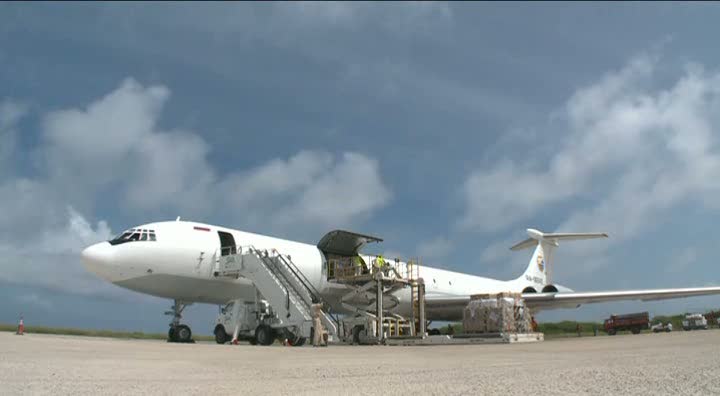

Somalia: First airlift
UNHCR's first aid flight to Somalia in five years lands in Mogadishu
with 31 metric tons of shelter materials and other relief items for
displaced Somalis.
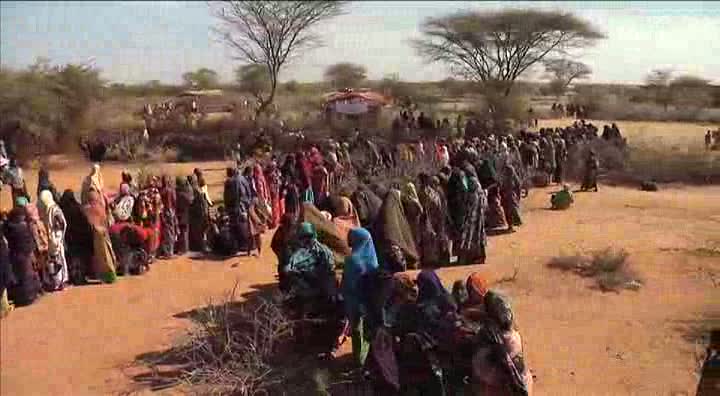

Somalia: Displaced by Drought
A tide of people displaced by drought and conflict has swollen the population of Dollow in Somalia. Most are heading for Mogadishu.
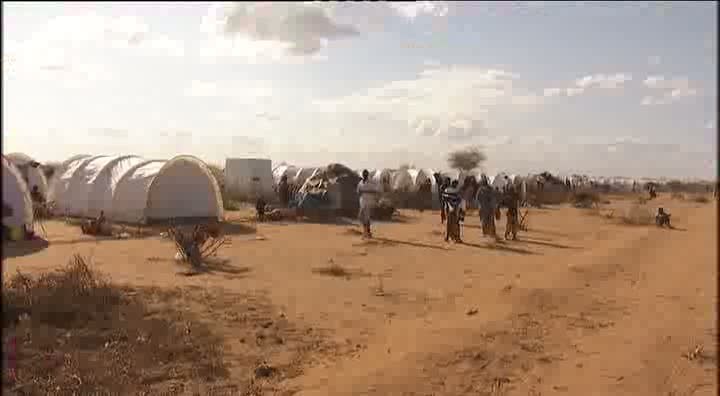

Kenya: Camp Extension
To cope with the growing numbers of Somali refugees arriving at Dadaab in northern Kenya, UNHCR has begun moving people into a new area called the Ifo Extension.
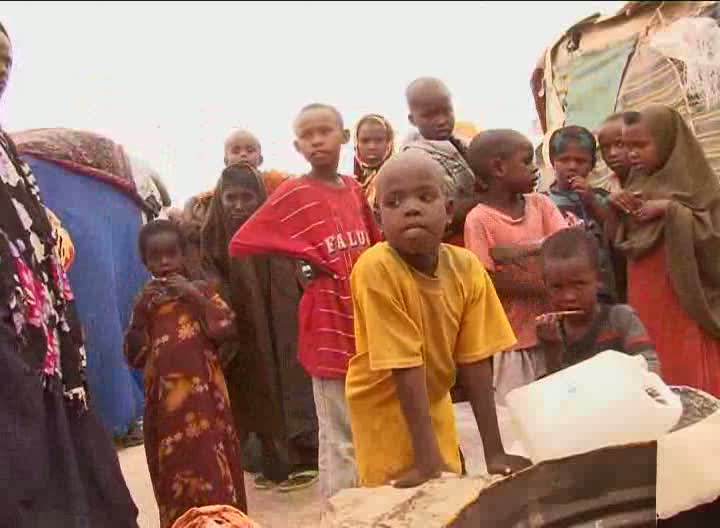

Somalia: Fleeing Famine
Tukaay is one of the nearly 1.5 million internally displaced Somalis struggling with drought and conflict.
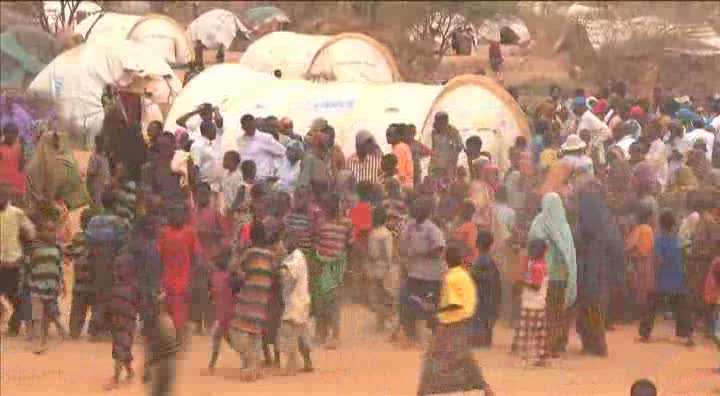

Kenya: Somalis in Dadaab
They lived through decades of conflict but drought was the final straw, say Somalis who fled their homes for Kenya's Dadaab camp.
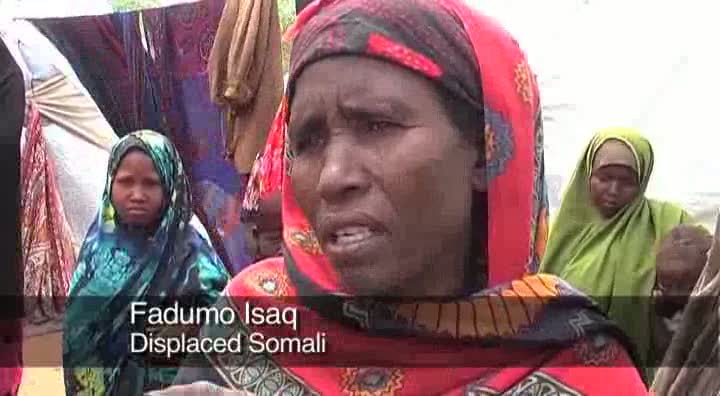

Somalia: Fleeing hunger
Conflict and drought have forced over 135,000 Somalis from their homes so far this year. Some walked for weeks to get help.
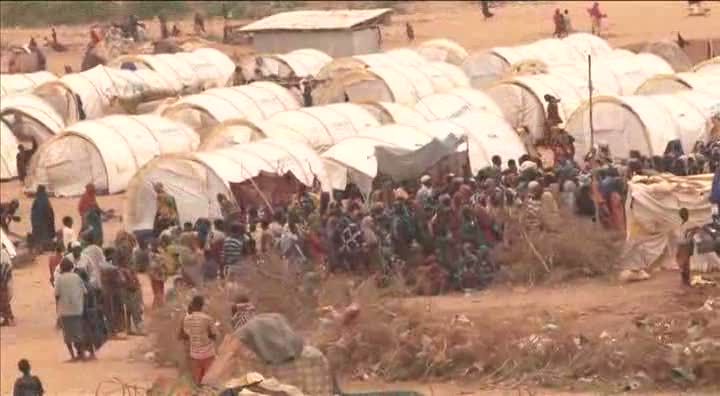

Ethiopia: Somali arrivals
This parched and remote corner of southeast Ethiopia has received an endless flow of Somali refugees, many of them malnourished and bearing tragic stories.
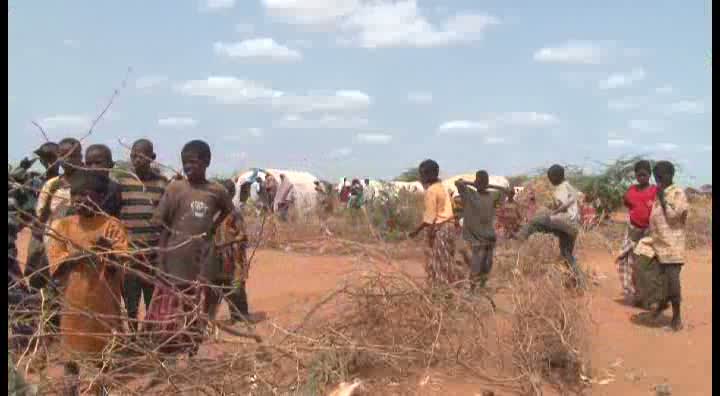

Kenya : Somali exodus to Kenya
The world's largest refugee complex at Dadaab in north-east Kenya is growing steadily as a fresh wave of Somali civilians flee their country to escape drought or conflict.
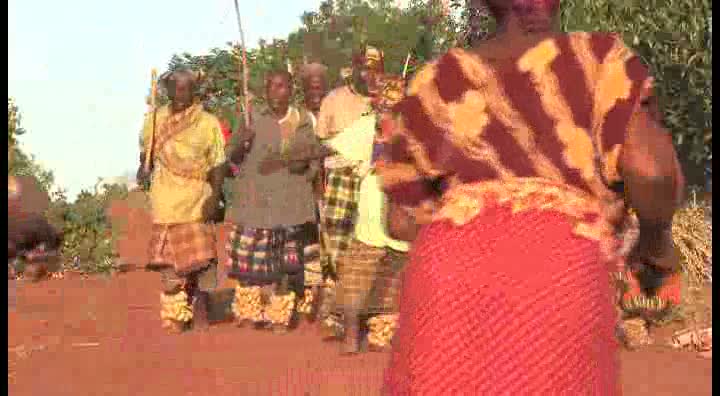

Tanzania: Bantu Homecoming
For more than four centuries, thousands of ethnic Bantus have lived in Somalia. Now they are making their way to Tanzania, land of their ancestors.
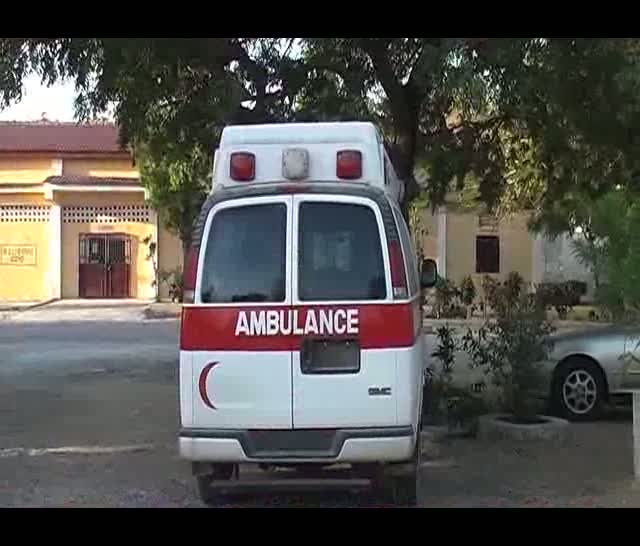

Somalia: In Harm's Way
In Mogadishu, violence spares no one. The past few weeks have been particularly violent and hospitals struggle to cope with the wounded and dying.
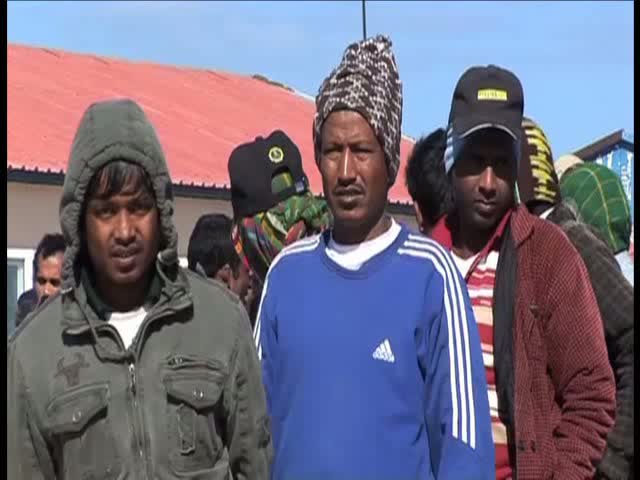

Libya: A Boat Out . . . for Some
A group of Bangladeshi workers leave the coastal Libya town of Benghazi by boat. But some Somalis are not so fortunate.
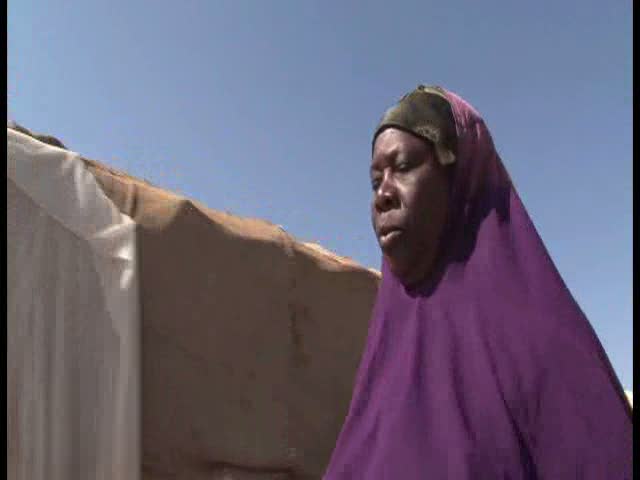

Somalia: High Commissioner's Appeal
UN High Commissioner for Refugees António Guterres recently visited northern and central Somalia and described the humanitarian situation as alarming.
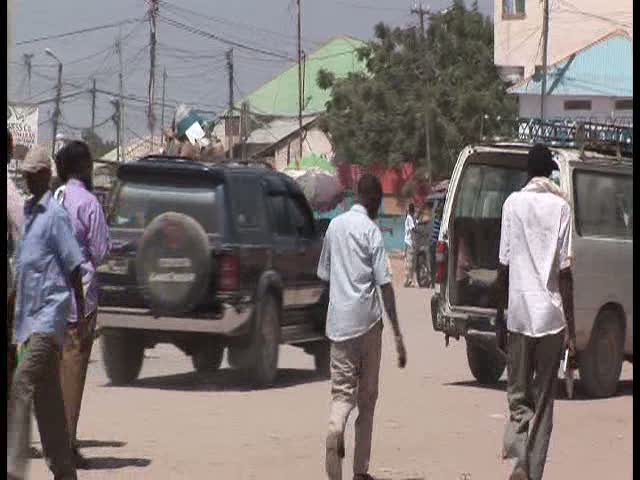

Somalia: Beyond Flight
Galkayo lies near the border between northern Somalia and the war-torn south-central region. Thousands of desperate people arrive there every week in the hopes of a better life.
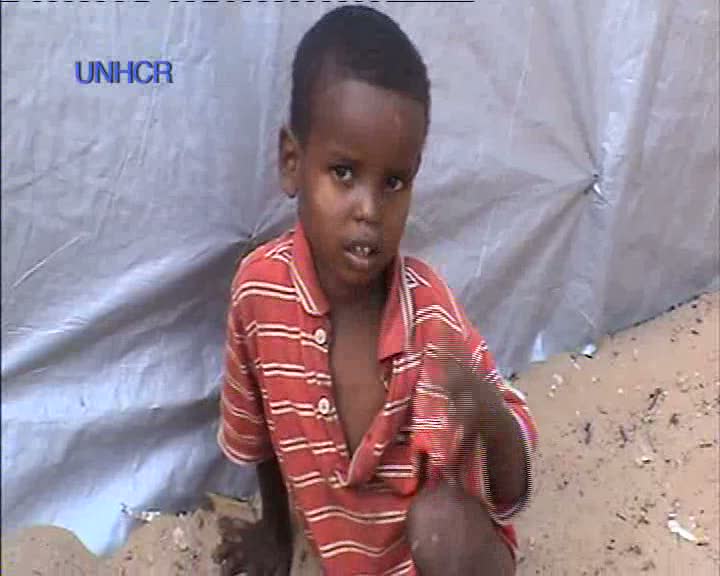

Somalia: Afgooye Corridor
Strip of land becomes the third largest urban area in Somalia.
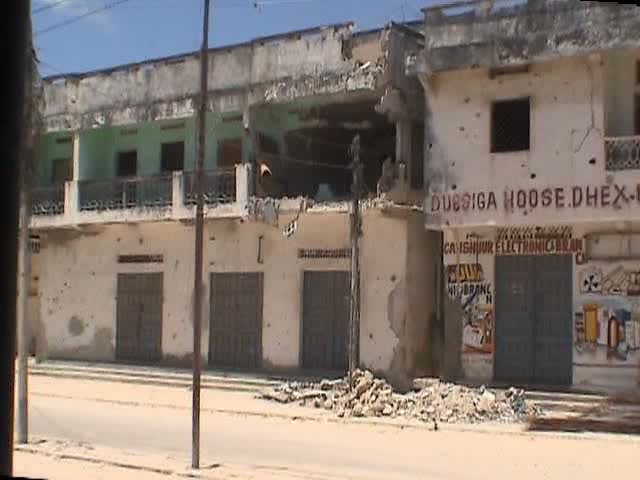

Somalia: City of Displaced
As people continue to flee the Somali capital of Mogadishu, a new city is growing to the west.


Somalia: Mapping Video
An animation of the mapping of temporary shelters and semi-permanent and permanent buildings.
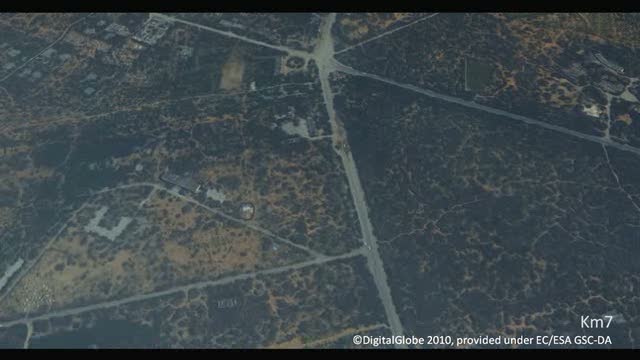

Somalia: Virtual Flight
A virtual flight over the Afgooye corridor based on the latest satellite imagery.


Somalia: Deported into Danger
Thousands of Somalis are being sent back to conflict-torn Mogadishu from Saudi Arabia. Their lives could be at risk.
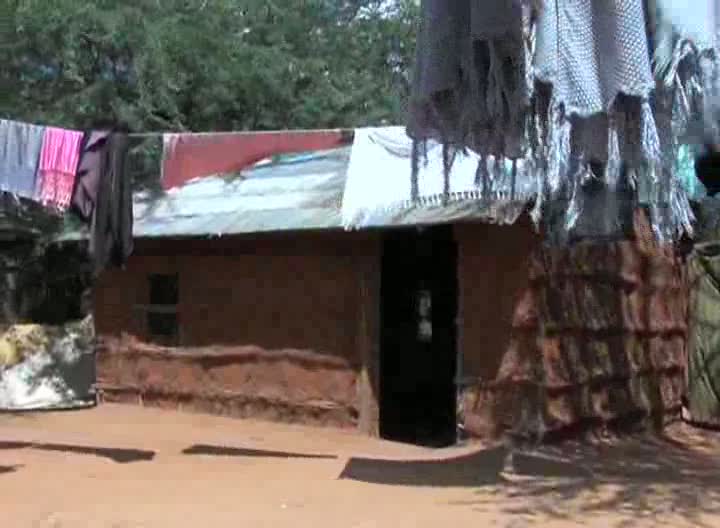

Kenya: Deck's Dream
Deck has lived in Kenya's Dadaab refugee camp for most of his life. The young Somali hopes that hard study will help him to a better future as a lawyer.
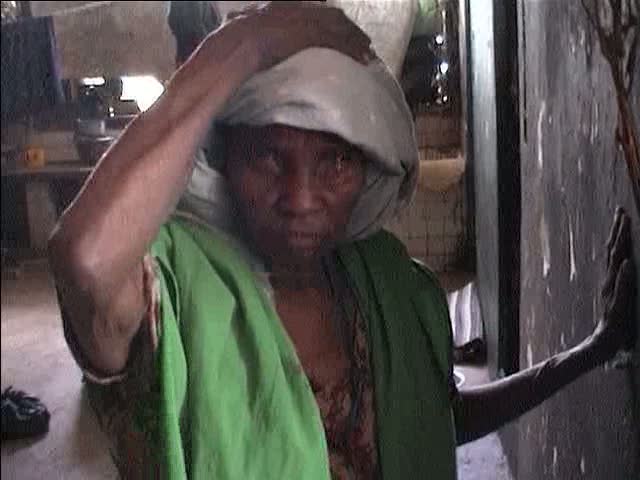

Somalia: Life in Mogadishu
Thousands of Somalis are fleeing the latest clashes in Mogadishu. Some fear the situation may deteriorate even further. Despite the violence many Somalis say they won't leave the battle-torn city.
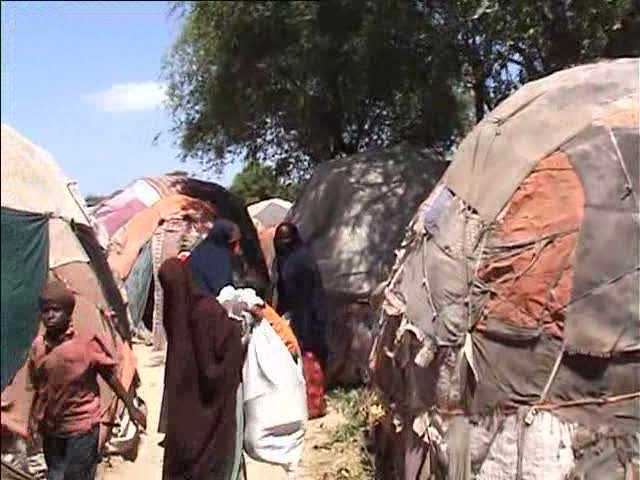

Somalia: Aid Situation
The impact of the persistent conflict in Somalia is spreading. Its effect on the civilian population and the humanitarian aid effort is devastating.
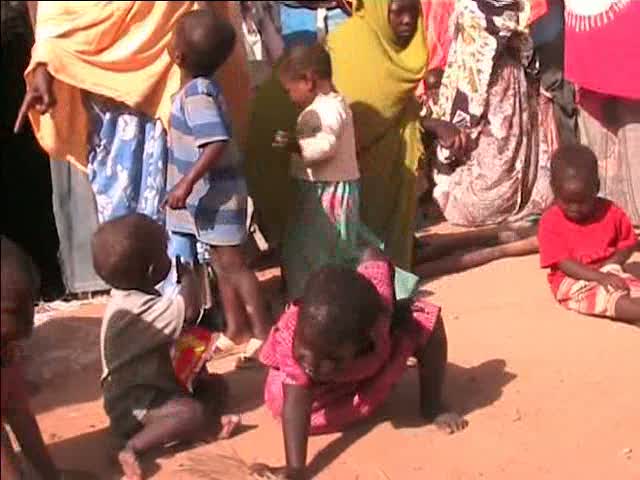

Somalia: The impact of War
In Somalia, more than 1.4 million people are internally displaced. Assisting them is both complicated and dangerous.
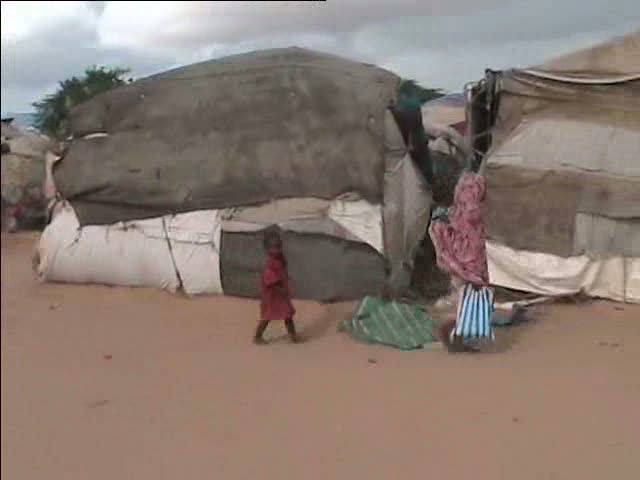

Somalia: Plight of the Internally Displaced
There are more than 1.4 million internally displaced people in Somalia. The constant violence in the south and centre of the country has made the task of helping them extremely difficult and dangerous.
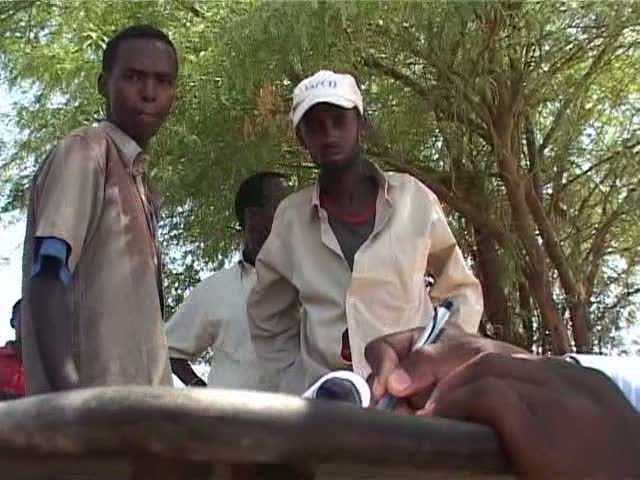

Somalis Flee to Djibouti
As Somalis continue fleeing violence in their homeland, the burden on neighbouring countries such as Djibouti is becoming harder to bear.
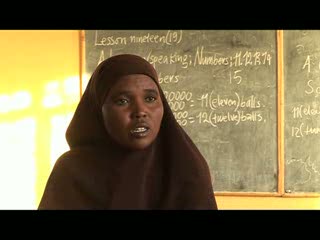

Somali Refugees: Ethiopian Camps
Ethiopias fortunes are closely linked with those of its troubled neighbour, Somalia. It has served as a refuge for tens of thousands of Somalis over the years, but recently the increasing numbers are straining the resources of the UN refugee agency.


Somali Refugees: Camps In Crisis
UNHCR faces a major challenge in finding solutions for newly arrived Somalia refugees in Kenya.
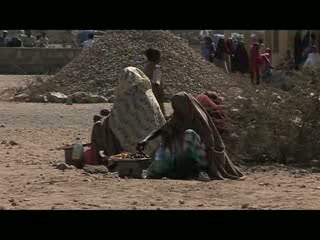

Somali Refugees: Ethiopian Camps
Increasing numbers of Somali refugees in Ethiopia are stretching the resources of the UN refugee agency.
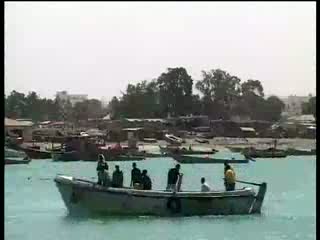

Somalia: People Smuggling
Despite the risks desperate people are willing to pay smugglers to help them escape violence or poverty.
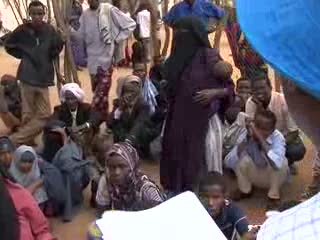

UN High Commissioner Visits Somalis in Kenya
In a visit to the sprawling Dadaab refugee camp on the Kenya-Somalia border in advance of World Refugee Day on Friday, the UN refugee agency chief, António Guterres said a political solution must be found to end the violence in Somalia and he acknowledged that UNHCR had to do more to help those uprooted by the 17-year conflict. Dadaab hosts 200,000 refugees with 20,000 new arrivals from Somali since January.
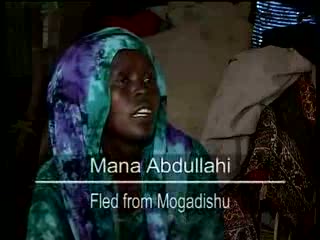

Somalia: Displaced By War
As conflict in Somalia continues to rage, the number of people fleeing the fighting has topped one million. Makeshift camps close to Mogadishu are overflowing and many of the displaced are moving further afield to areas where conditions are better.
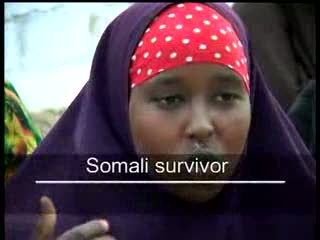

Testimonial: Somali Survivor
Testimonial of a Somali survivor after reaching Yemen


